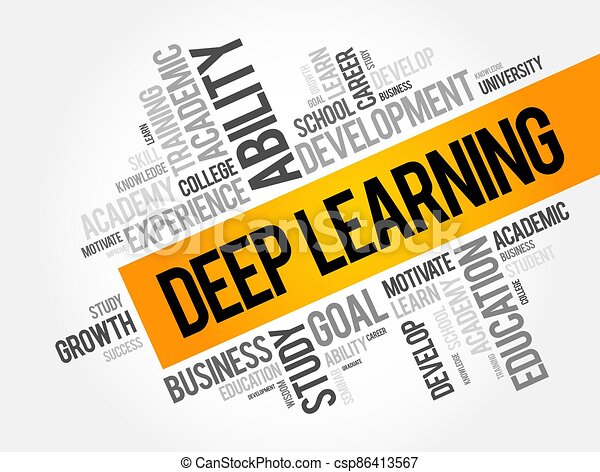
What is artificial global intelligence? Artificial general intelligence refers to a technology that makes intelligent agents capable in any intellectual task. This article will explain the key differences between strong AI and weak AI and how each will affect the future of medicine. Artificial general intelligence is the ability of an intelligent agent to learn any task, no matter how difficult. Although this technology is still years away from commercial use, it is already making a significant impact on our daily lives.
Artificial general intelligence
Artificial general Intelligence (AGI) is the ability of an intelligent agent or computer to comprehend any intellectual task. Intelligent agents will be able understand and perform any task, even if they are not told. This ability is also referred to as super intelligence. Here are the benefits of AI for business:
Strong AI
Artificial general intelligence can be described as the ability of intelligent agents and computers to comprehend all aspects of an intellectual task. In other words it is the ability of a machine, to accomplish any task, that a human being cannot. While this type of intelligence is extremely difficult to achieve in the wild, it's a step toward the ultimate goal of AI. To create such a machine, an intelligent agent or human must have strong artificial intelligence (or AGI).
Weak AI
Weak artificial intelligence is a type of AI that implements a narrow aspect of the human mind. It is focused on a narrow task, and therefore is called "narrow AI". John Searle defined weak AI as "useful for testing hypotheses regarding the nature of minds but not as actual brains." Here are some examples for weak artificial intelligence. Both are useful and interesting, but neither is the best.
Applications in medicine
AI is changing healthcare. AI's applications in medicine are no different. Machine learning (NLP) is well-known, as are neural networks that allow for the interpretation of laboratory data. Artificial intelligence isn't yet the solution to all problems in the rapidly growing field of medicine. AI can also be used in electrodiagnosis, genetic diagnosis and medical diagnostics. AI is a vast field of application in medicine. It should be taught to healthcare professionals.
The Future of AI
The future of artificial intelligence will have a profound effect on the creative process. For us to process huge amounts of information efficiently, we'll need to have more than ever. AI is a great tool to help us accomplish this. Its algorithms will help us detect software bugs and write clean code. These advanced techniques will allow us to decrease downtime as well as increase our efficiency. Let's take a closer look at what the future of artificial intelligence has in store for us.
FAQ
Is there any other technology that can compete with AI?
Yes, but still not. There are many technologies that have been created to solve specific problems. However, none of them can match the speed or accuracy of AI.
Where did AI come?
In 1950, Alan Turing proposed a test to determine if intelligent machines could be created. He stated that a machine should be able to fool an individual into believing it is talking with another person.
John McCarthy took the idea up and wrote an essay entitled "Can Machines think?" In 1956, McCarthy wrote an essay titled "Can Machines Think?" He described the difficulties faced by AI researchers and offered some solutions.
Which AI technology do you believe will impact your job?
AI will replace certain jobs. This includes taxi drivers, truck drivers, cashiers, factory workers, and even drivers for taxis.
AI will create new employment. This includes those who are data scientists and analysts, project managers or product designers, as also marketing specialists.
AI will make existing jobs much easier. This includes accountants, lawyers as well doctors, nurses, teachers, and engineers.
AI will make existing jobs more efficient. This includes salespeople, customer support agents, and call center agents.
Statistics
- In 2019, AI adoption among large companies increased by 47% compared to 2018, according to the latest Artificial IntelligenceIndex report. (marsner.com)
- Additionally, keeping in mind the current crisis, the AI is designed in a manner where it reduces the carbon footprint by 20-40%. (analyticsinsight.net)
- While all of it is still what seems like a far way off, the future of this technology presents a Catch-22, able to solve the world's problems and likely to power all the A.I. systems on earth, but also incredibly dangerous in the wrong hands. (forbes.com)
- According to the company's website, more than 800 financial firms use AlphaSense, including some Fortune 500 corporations. (builtin.com)
- By using BrainBox AI, commercial buildings can reduce total energy costs by 25% and improves occupant comfort by 60%. (analyticsinsight.net)
External Links
How To
How to build an AI program
Basic programming skills are required in order to build an AI program. There are many programming languages to choose from, but Python is our preferred choice because of its simplicity and the abundance of online resources, like YouTube videos, courses and tutorials.
Here's how to setup a basic project called Hello World.
You'll first need to open a brand new file. This is done by pressing Ctrl+N on Windows, and Command+N on Macs.
Enter hello world into the box. Press Enter to save the file.
For the program to run, press F5
The program should display Hello World!
However, this is just the beginning. If you want to make a more advanced program, check out these tutorials.